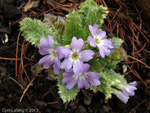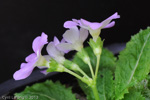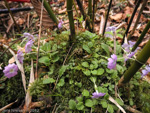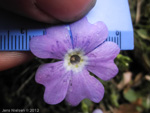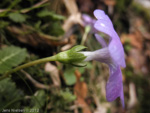Primula odontocalyx (Franchet) Pax, in Pflanzenr. IV. 237(Heft 22): 41. 1905.
Section Petiolares
Link to Flora of China description
Type specimen: Farges 971 resides at Paris (specimen P04567218, P04567222, P04567221).
P. petiolaris Wallich var. odontocalyx (syn): Franchet, J. Bot. (Morot) 9: 449. 1895. Type specimen: Farges 971 resides as above.
P. hupehensis (syn): Craib, Notes Roy. Bot. Gard. Edinburgh. 14: 32. 1923. Type specimen: A. Henry s.n. [ca. 1885] (Fang district, Hubei) resides at KEW (specimen K000750153). Described from Hubei.
P. hylophila (syn): I. B. Balfour & Farrer, Notes Roy. Bot. Gard. Edinburgh 9:173. 1916. Type specimen: Farrer & Purdom F38, P1 resides at Royal Botanic Garden Edinburgh (specimen E00024294) and US National Herbarium (specimen US00116483) and KEW (specimen K000750148). Described from Gansu.
P. tenuissima Pax, in Pflanzenr. IV. 237(Heft 22): 42. 1905. Type specimen: Wilson 1831, 2064 resides at Royal Botanic Garden Edinburgh (specimen E00024292).
Epithet: Named for the toothed calyx lobes.
Distribution: S Gansu, W Henan, W Hubei, S Shaanxi, Sichuan.
P. odontocalyx was intially thought to be a variety of P. petiolaris but this was based on limited material. Named for the toothing of the calyx lobes in the original material, this characteristic varies from 2-3 teeth to entire and undulating. Characteristics that distinguish this species are efarinose, no hairs, basal scales absent at flowering, and a scape higher than the leaves. Differs from related P. sinuata in the shape of the leaves and from related P. euosma in the annulate corolla. Close to, but differs from P. moupinensis by being efarinose, by the slender scape and by the linear-lanceolate bracts. P. tenuissima was thought to be "nomen tantm" (a superfluous name), but it was validly published and it may be that further analysis could result in it being a distinct species. I have asked (and they have now complied) to update this record on the International Plant Names Index. P. epilosa (P. cheniana synonym) has been included in this species but it obvioulsy belongs to Section Davidii and is not the same as P. odontocalyx. The first 6 images approximate to P. hylophila. Images from Wushan below spread by underground rhizomes forming a mat. This is a widespread species, centered in S. Shaanxi.


